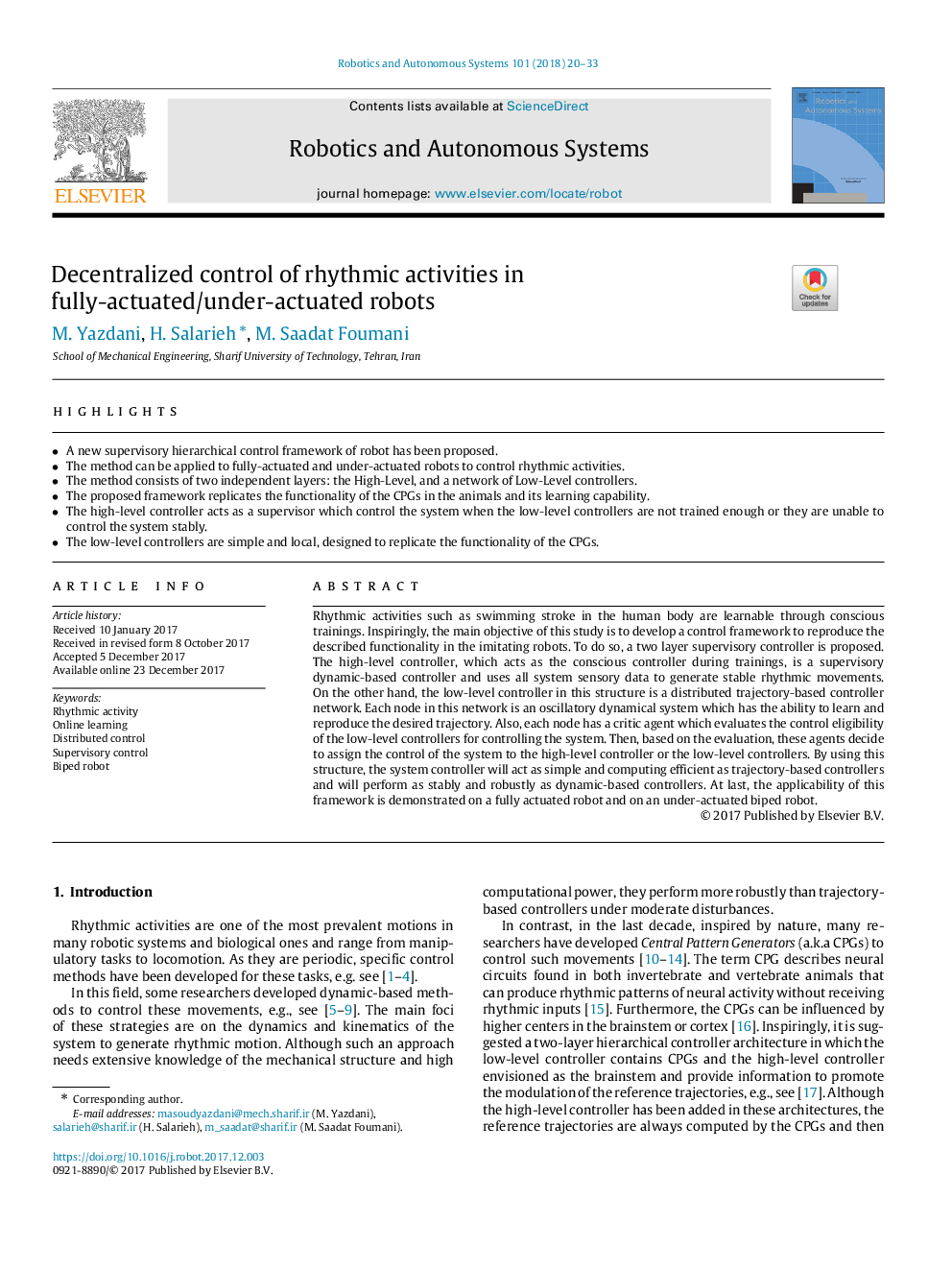| Article ID | Journal | Published Year | Pages | File Type |
|---|---|---|---|---|
| 6867253 | Robotics and Autonomous Systems | 2018 | 14 Pages |
Abstract
Rhythmic activities such as swimming stroke in the human body are learnable through conscious trainings. Inspiringly, the main objective of this study is to develop a control framework to reproduce the described functionality in the imitating robots. To do so, a two layer supervisory controller is proposed. The high-level controller, which acts as the conscious controller during trainings, is a supervisory dynamic-based controller and uses all system sensory data to generate stable rhythmic movements. On the other hand, the low-level controller in this structure is a distributed trajectory-based controller network. Each node in this network is an oscillatory dynamical system which has the ability to learn and reproduce the desired trajectory. Also, each node has a critic agent which evaluates the control eligibility of the low-level controllers for controlling the system. Then, based on the evaluation, these agents decide to assign the control of the system to the high-level controller or the low-level controllers. By using this structure, the system controller will act as simple and computing efficient as trajectory-based controllers and will perform as stably and robustly as dynamic-based controllers. At last, the applicability of this framework is demonstrated on a fully actuated robot and on an under-actuated biped robot.
Related Topics
Physical Sciences and Engineering
Computer Science
Artificial Intelligence
Authors
M. Yazdani, H. Salarieh, M. Saadat Foumani,
